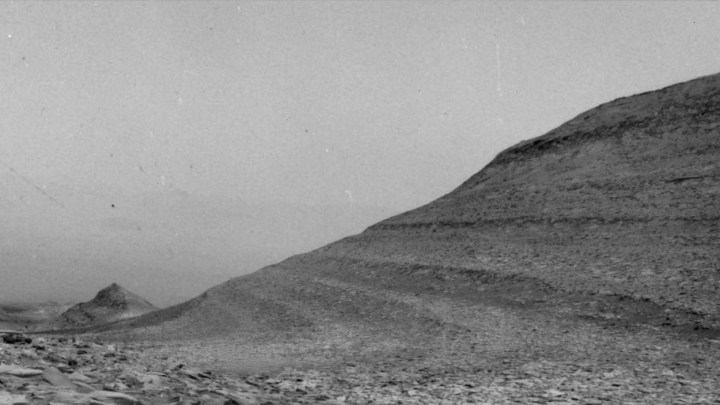
The recent solar storms caused epic events here on Earth, where auroras were visible across much of the globe last month. These storms, caused by heightened activity from the sun, don’t only affect our planet though — they also affect Mars. NASA missions like the Curiosity rover have been observing the effects of solar storms there, where the very thin atmosphere creates a potentially dangerous radiation environment. If we ever want to send people to visit the red planet, we’re going to need to learn more about this radiation and how it’s affected by events like solar storms.
The effects of the solar storms can be seen clearly in the way that they affect Curiosity’s cameras. The charged particles from the solar storms hit the camera and create specks across the images, which can be seen most clearly in animations. Two animations from Curiosity’s Navigation Camera (MSL) instrument show the charged particles, which look like snow or static over the view of Mars — check them out on NASA’s Jet Propulsion Collaborator website here and here.
As cool as these storms look when seen through electronic eyes, if astronauts had been on the planet’s surface when such a solar storm hit, they would have been bombarded with a radiation dose of 8,100 micrograys, which NASA says is equivalent to 30 chest X-rays. That isn’t enough to kill someone, but it is a big radiation spike that has researchers considering how to protect future astronauts.
One option is to use the Mars landscape for protection, such as heading below ground. “Cliffsides or lava tubes would provide additional shielding for an astronaut from such an event. In Mars orbit or deep space, the dose rate would be significantly more,” said the Southwest Research Institute’s Don Hassler, the lead researcher on Curiosity’s Radiation Assessment Detector instrument. “I wouldn’t be surprised if this active region on the sun continues to erupt, meaning even more solar storms at both Earth and Mars over the coming weeks.”
NASA spacecraft in orbit around the planet also saw the effects of the solar storms on the martian surface. Some even caused instruments to drop out, like one of the Mars Odyssey’s cameras, which was taken out for around an hour. The Maven (Mars Atmosphere and Volatile EvolutioN) orbiter was also able to see auroras over Mars, which happen through a different mechanism than here on Earth as Mars has no global magnetic field.
“This was the largest solar energetic particle event that MAVEN has ever seen,” said MAVEN Space Weather Lead Christina Lee of the University of California, Berkeley’s Space Sciences Laboratory. “There have been several solar events in past weeks, so we were seeing wave after wave of particles hitting Mars.”
Editors’ Recommendations
Services Marketplace – Listings, Bookings & Reviews
